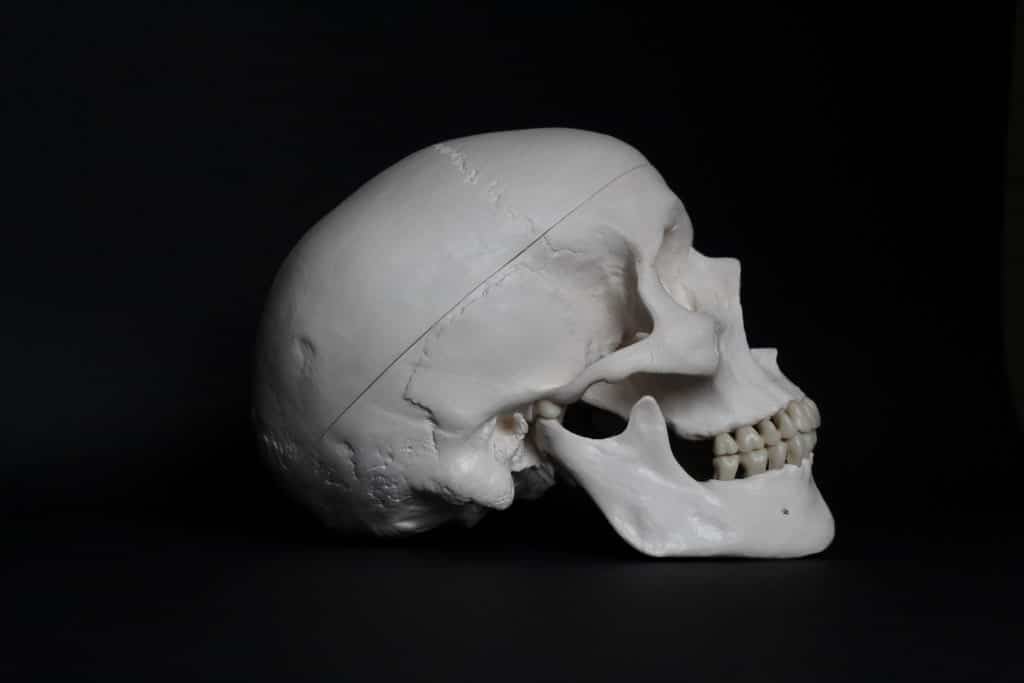The human head and face look round, giving the impression that beneath the hair and skin is one large bone. However, this isn’t the case. The human skull comprises several bones with fascinating shapes compared to bones in other body parts. Fibrous joints called sutures connect these skull bones, making them look smooth and jointless. Some of the bones that can be found in the anatomy of the head and face includes; the jawbone, zygoma, nasal bones, frontal bones, occipital bone, etc. A fracture to any of these bones can cause severe deformity to a person’s face. It’s even worse if it’s a zygoma fracture.
What Type Of Bone Is Zygoma?
The zygoma, otherwise known as the zygomatic bone or cheekbone, is one of the irregular bones in the human skeletal system. It’s found in the face, looking diamond-shaped – articulated with the frontal, maxilla, temporal, and sphenoid bones. It connects and extends from the protruding cheeks to parts of the eye, ears, jaws, and forehead.
The zygoma is an integral part of the facial skeleton as it contributes to the structure and aesthetics of the face. People with high cheekbones are considered to be more attractive, especially women.
A Journal of Cosmetic Dermatology publication explained that most attractive people have one thing in common: high cheekbones. Due to the attractiveness of having a perfectly shaped zygoma, some people often opt for zygoma reduction plastic surgery.
However, the way the zygoma is shaped puts it at risk of getting exposed to injury compared to other parts of the face. Just like the nasal bone, the zygoma is protruding. Little wonder a publication in the National Center for Biotechnology Information stated that “fracture of the zygoma is the second most common fracture of the face, just behind nasal fractures.”
Hence, a severe zygoma fracture can cause significant deformity to the facial structure. Some victims even opt for plastic surgery to correct the deformation of the cheekbone, making them look more aesthetically pleasing.

Common Causes Of Zygoma Fracture
A couple of reasons can cause fractures to the face. It could be an intentional act or an intentional one. Whichever the case, a brute force to the zygoma can lead to multiple fractures.
According to a study published in The Journal of Craniofacial surgery, 468 patients were involved in the research, and it turned out that assaults accounted for 64.5% of the cause of zygoma fracture in patients.
The assault can result from a bullet piercing, a blow to the face, or being hit on the face with a solid object.
An example is the case of Moore v. State, where a blow to the face caused a victim’s zygoma to be fractured into three places. Another example is the case of Lumley v. City of Dade City, Fla., where a bullet piercing caused a right zygomatic fracture to a victim.
In addition, an automobile crash is also a common cause of zygoma fracture. The study, as mentioned above, stated that traffic accidents account for 13.9% of the cause of zygoma fracture.
However, traffic accidents are not limited to only road collisions; there have been cases of railway accidents causing victims to suffer a zygoma fracture. An example is the case of Oldham v. Schweiker, where the plaintiff sustained a fracture of the right zygomatic arch from an automobile-train collision.
Furthermore, work-related accidents are also a common cause of zygoma fracture. A fall in the workplace or objects falling on an employee while at work can also cause a zygoma fracture. An instance can be seen in the case of Ramos v. STATE EX REL. WORKERS’SAFETY AND COMPENSATION DIVISION, where an employee suffered a depressed fracture of the right zygoma in a work-related accident.
Zygoma Fracture Animation In A Court Trial
When a zygoma fracture happens to a victim, some may decide to foot the bill associated with treating the injury. In contrast, others seek compensation in court from a third party who has caused them the damage.
In a courtroom trial involving a zygoma fracture case, animation can be a demonstrative aid used by an attorney or expert witness to explain the causation of the injury to the jury member. An animation can be created to illustrate the accident, assault, or fall that led to the injury.
Furthermore, the anatomy of the face can be illustrated with an animation showing the structure of the face before and after a zygoma fracture. Deformities caused by the injury can as well be explained to the jury.
Suppose an expert witness also needs to explain a surgical process required for different levels of a zygomatic fracture. In that case, an animation can aid in breaking down and showing the different procedures involved.
In conclusion, a zygoma fracture animation can help present the severity of the injury in the right light to the jury. As long as the animation was created by an experienced legal animation company that considers the rules of admissibility of demonstrative evidence, such animation can turn the case around in favor of the user.





